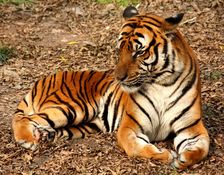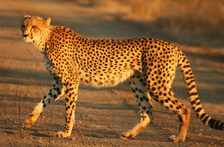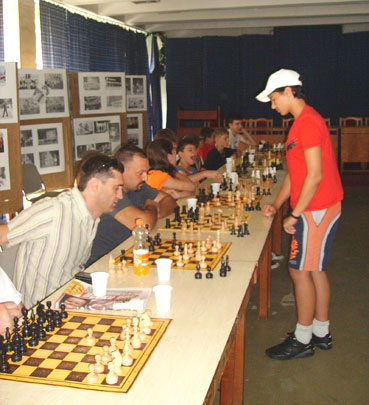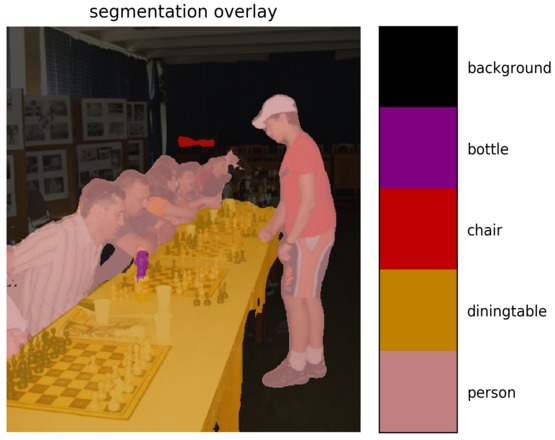Vision4j collection
Collection of computer vision models, ready to be included in a JVM project. The idea is to maintain a list of implementations for different computer vision problems in a plug-and-play format.
Table of Contents
Problems
Classification
By a given image, find the category that the image belongs to. For example, if a model is trained to recognize
the categories: lion, cheetah and tiger, when given an image in one of those categories, it can recognize it.
| Input | Output |
|---|---|
 |
tiger |
 |
cheetah |
 |
lion |
Implementations available for this problem:
Pretrained VGG16 on ImageNet using DeepLearning4j
Trained on the ImageNet dataset.
To use this implementation in your project, add the dependency:
<dependency>
<groupId>com.vision4j</groupId>
<artifactId>vgg16-deeplearning4j-classifier</artifactId>
<version>1.2.0</version>
</dependency>This implementation uses ND4J, so you should add one more dependency depending on whether you have GPU or not. You can read more about it here.
Once you have added the dependency and did the necessary setup, you can use it like this:
ImageClassifier imageClassifier = new Vgg16DeepLearning4jClassifier();
Category category = imageClassifier.predict(new File("./cheetah.jpg"));
String name = category.getCategoryName(); // cheetah
int index = category.getIndex(); // 293Minimum required memory for the model: 1.355 GB
Prediction times (in seconds):
| Image size | 1080Ti | K80 | CPU (AMD Ryzen) |
|---|---|---|---|
| 224x224 | 0.070 | TODO | 0.730 |
GRPC classifier
Delegates to another classifier (in another languages) through GRPC call.
To use this implementation in your project, add the dependency:
<dependency>
<groupId>com.vision4j</groupId>
<artifactId>grpc-classifier</artifactId>
<version>1.2.0</version>
</dependency>This implementation requires a GRPC server running with the classifier. You can use any C++, Python or Lua model. By default, it communicates over localhost on port 50051 and is usually faster than the corresponding DeepLearning4j implementation. You can read more about GRPC here. This model can be combined with any of the following models:
Keras VGG16 classification
If you have a GPU:
nvidia-docker run -it -p 50051:50051 vision4j/grpc-keras-vgg16-classification:gpuIf you have only a CPU:
docker run -it -p 50051:50051 vision4j/grpc-keras-vgg16-classificationMinimum required memory for the model: TODO
Prediction times (in seconds):
| Image size | 1080Ti | K80 | CPU (AMD Ryzen) |
|---|---|---|---|
| TODO | TODO | TODO | TODO |
Once you have added the dependency and started the external model, you can use it like this:
ImageClassifier imageClassifier = new GrpcClassifier();
Category category = imageClassifier.predict(new File("./cheetah.jpg"));
String name = category.getCategoryName(); // cheetah
int index = category.getIndex(); // 293The memory requirements and the prediction times depend on the model that is being delegated to.
Segmentation
By a given image, for each pixel predict what it is. For example, if a model is trained to recognize
person, table and bottle, when given an image, it is able to correctly predict the boundaries of every category of objects.
| Input | Output |
|---|---|
 |
 |
Implementations available for this problem:
GRPC segmentation
Delegates to another segmentation model (in another languages) through GRPC call.
To use this implementation in your project, add the dependency:
<dependency>
<groupId>com.vision4j</groupId>
<artifactId>grpc-segmentation</artifactId>
<version>1.0.0</version>
</dependency>This implementation requires a GRPC segmentation server. You can use any C++, Python or Lua model. By default, it communicates over localhost on port 50052 and is usually faster than the corresponding DeepLearning4j implementation. You can read more about GRPC here. This model can be combined with any of the following models:
DeepLabV3 Pascal VOC segmentation
If you have a GPU:
nvidia-docker run -it -p 50052:50052 vision4j/deeplabv3-pascal-voc-segmentation:gpuIf you have only a CPU:
docker run -it -p 50052:50052 vision4j/deeplabv3-pascal-voc-segmentationMinimum required memory for the model: TODO
Prediction times (in seconds):
| Image size | 1080Ti | K80 | CPU (AMD Ryzen) |
|---|---|---|---|
| TODO | TODO | TODO | TODO |
Once you have added the dependency and started the external model, you can use it like this:
Segmentation seg = new PascalVOC2012GrpcSegmentation();
SegmentationResult res = seg.segment(new File("chess.jpg"));
BufferedImage resultImage = res.getBufferedImage();The memory requirements and the prediction times depend on the model that is being delegated to.